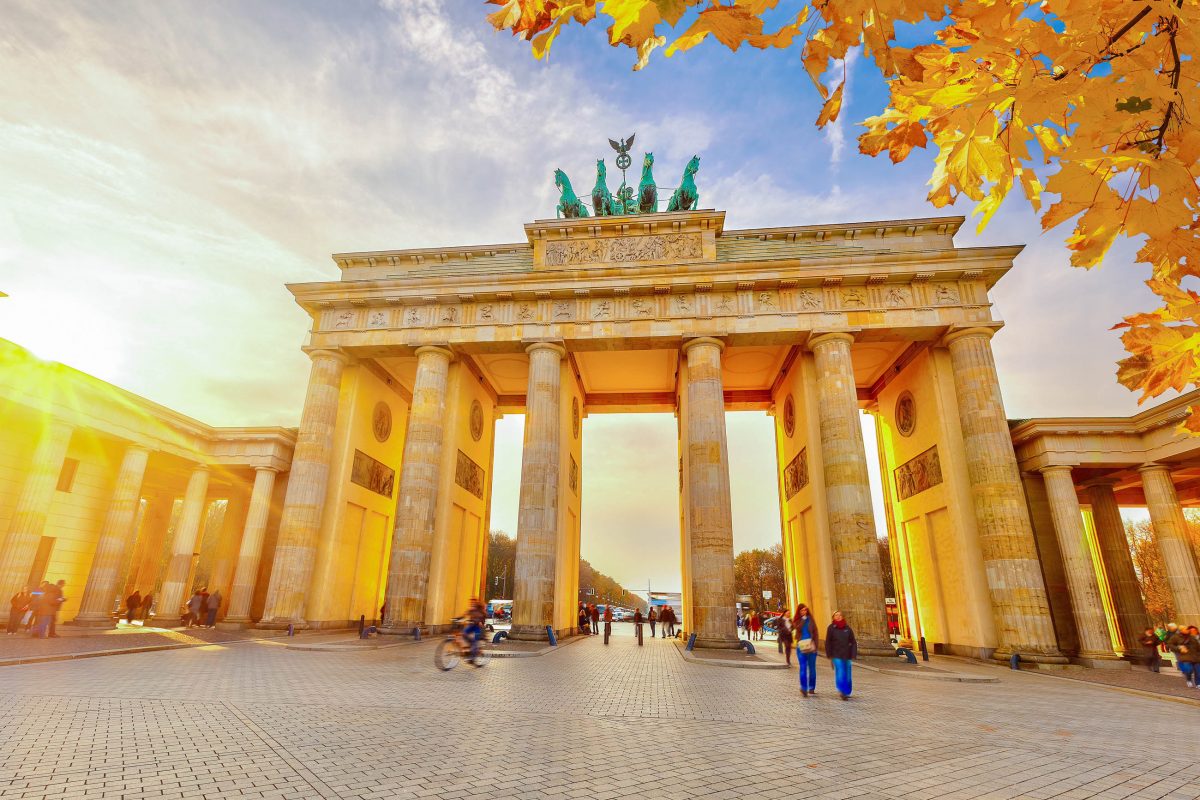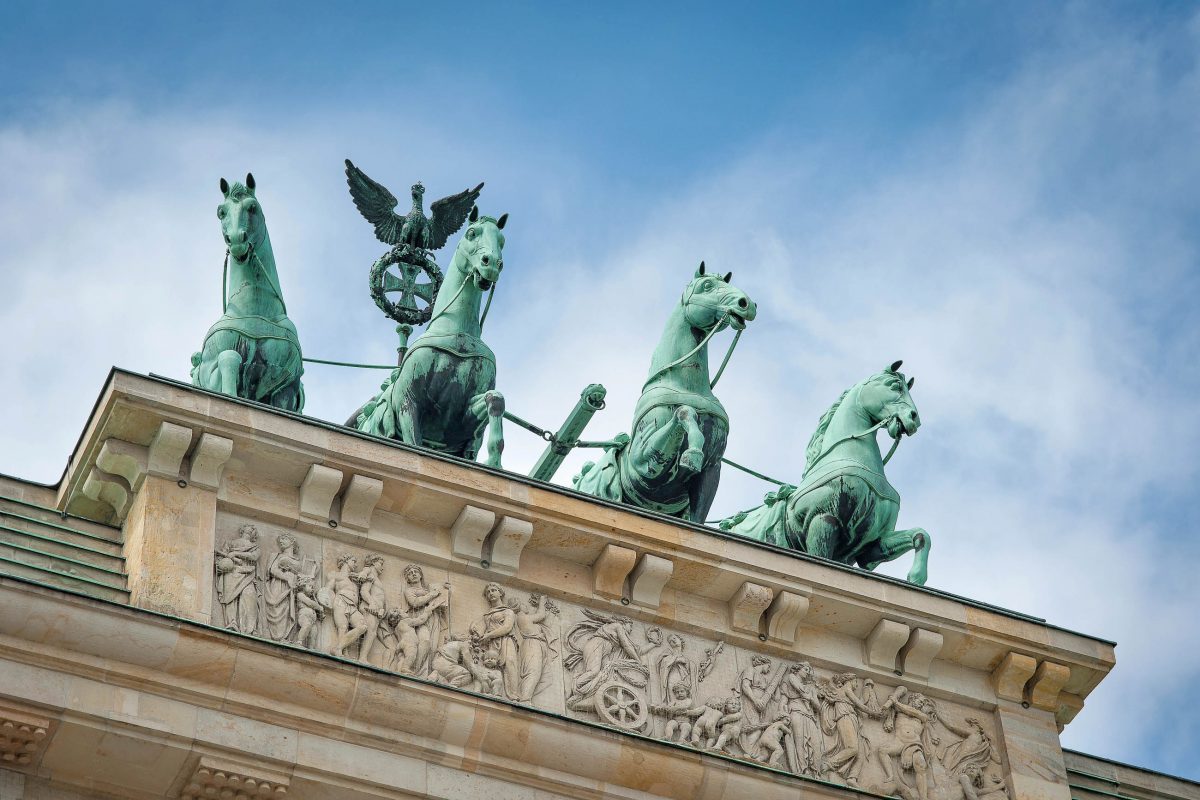Das Brandenburger Tor zählt zu den beeindruckendsten Schöpfungen des deutschen Klassizismus. Es wurde nach der Teilung Berlins zu einem Symbol des kalten Krieges, seit der Wende in der DDR gilt es als Symbol der Deutschen Einheit.
Das Brandenburger Tor in der deutschen Hauptstadt Berlin wurde von 1788 bis 1791 auf Geheiß des preußischen Königs Friedrich Wilhelm II. errichtet und ist das bekannteste Wahrzeichen von Berlin. Es entstand nach Entwürfen von Carl Gotthard Langhans. Das Bauwerk aus Sandstein zählt zu den imposantesten Bauten des deutschen Klassizismus und gehört zu unseren Top 10 Sehenswürdigkeiten von Deutschland und Berlin.
Inhaltsverzeichnis
BILDER: Brandenburger Tor in Berlin
Fotogalerie: Brandenburger Tor in Berlin
Wo steht das Brandenburger Tor?

Das monumentale Tor bildet den Abschluss der Straße Unter den Linden. Es ist 20 Meter hoch, 65 Meter breit, 11 Meter tief, hat fünf Durchfahrten, von denen die mittlere etwas breiter ist, und
Durch den Bau der Berliner Mauer 1961 stand das Brandenburger Tor plötzlich mitten im Sperrgebiet und markierte bis 1990 die Grenze zwischen West- und Ostberlin. Dadurch wurde es auch zu einem Symbol der Teilung Berlins und des Kalten Krieges.
Nach der Wende in der DDR wurde das Tor am 22. Dezember 1989 unter dem Jubel von 100.000 Menschen wieder geöffnet und gilt seither als das Symbol der Deutschen Einheit.
Quadriga als „Retourkutsche“

Die vom Künstler Gottfried Schadow geschaffene berühmte Quadriga – die Friedensgöttin Viktoria auf einer Kutsche mit vier vorgespannten Pferden – wurde 1794 errichtet und stellt die Krönung des Brandenburger Tores dar. 1806 wurde die Quadriga durch den französischen Kaiser Napoleon nach Paris gebracht und sollte dort als Beutekunst ausgestellt werden.
Nach dem alliierten Sieg über Napoleon wurde die Quadriga 1814 wieder nach Berlin zurückgebracht und sorgfältig restauriert. Damit war die Kutsche also wieder an ihrem Platz retour und der Ausdruck „Retourkutsche“ wurde zum geflügelten Wort.





